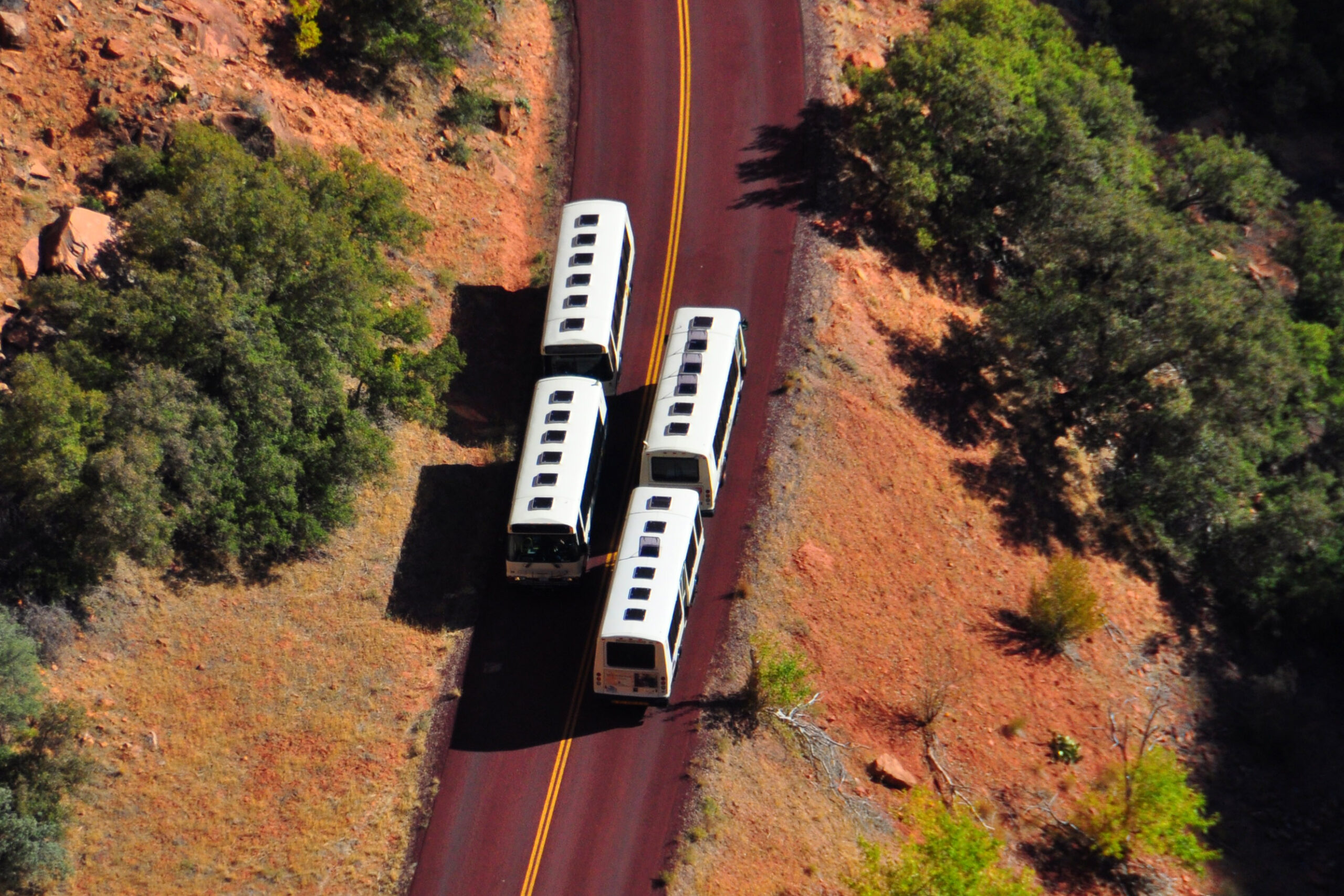
Zion National Park, renowned for its breathtaking scenery, has successfully transitioned to an all-electric bus fleet. This milestone marks a significant upgrade from the propane-fueled buses introduced 25 years ago. Here’s an assessment of the park’s electric bus initiative.
Background
In 1997, Zion National Park prohibited private vehicles in Zion Canyon for seven months annually, citing congestion concerns. The park introduced propane-powered buses to transport visitors. By the 2020s, maintenance issues prompted a shift to electric buses.
The Electric Fleet
Zion’s electric fleet comprises:
1. Five 40-foot buses (New Flyer) connecting Springdale to the park
2. Twenty-five 60-foot articulated buses (New Flyer XDE60 Xcelsiors) operating within the park
Performance and Capacity
1. Range: 40-foot buses: 225 miles; 60-foot buses: 135 miles
2. Trips per charge: 60-foot buses: 8 trips (16 miles per trip)
3. Daily operations: 12 hours (7:00 a.m. to 7:00 p.m.) on a single charge
4. Seating capacity: 40-foot buses: 34 seats (70 passengers); 60-foot buses: 48 seats (90 passengers)
Driver Feedback
While drivers praise the buses’ performance, they express concerns about:
1. Reliability issues with non-drive components
2. Inadequate heating and air-conditioning systems
Charging Infrastructure
Twenty-seven dedicated plug-in charging stations support the fleet.

Manufacturing
The buses were manufactured by New Flyer Industries Inc. (Winnipeg, Canada) at their Saint Cloud, Minnesota facility.
Personal Perspective
As a frequent visitor, I attest to Zion’s unparalleled beauty. The electric bus initiative enhances the park’s commitment to sustainability.
Conclusion
Zion National Park’s electric bus fleet demonstrates a successful transition to eco-friendly transportation. Despite minor issues, the park’s dedication to environmental stewardship sets a commendable example for national parks worldwide.